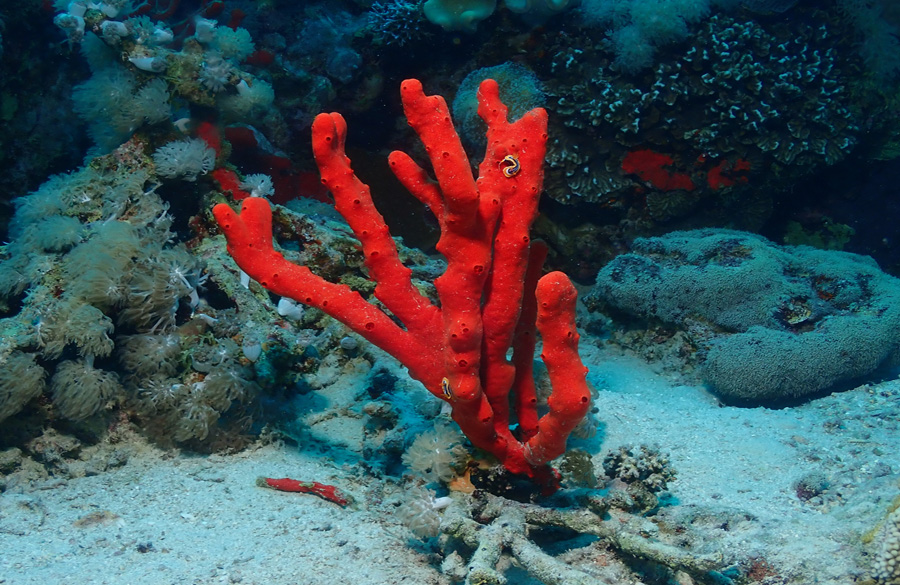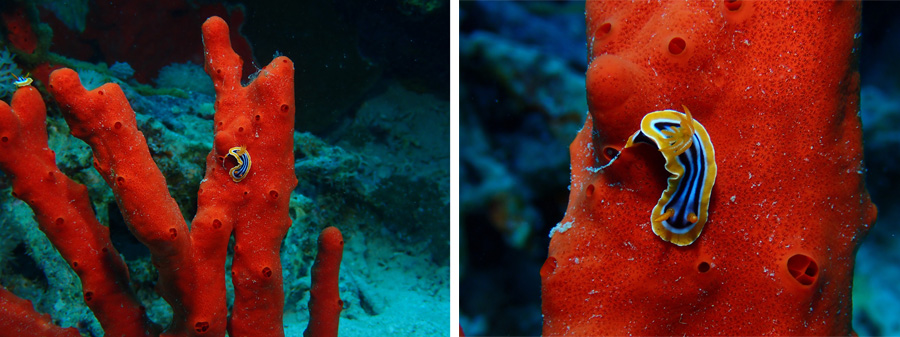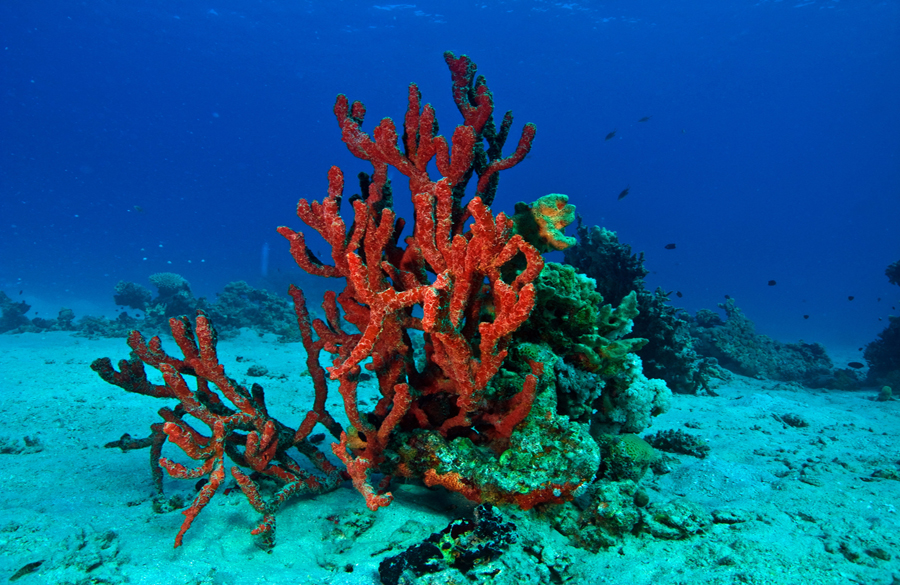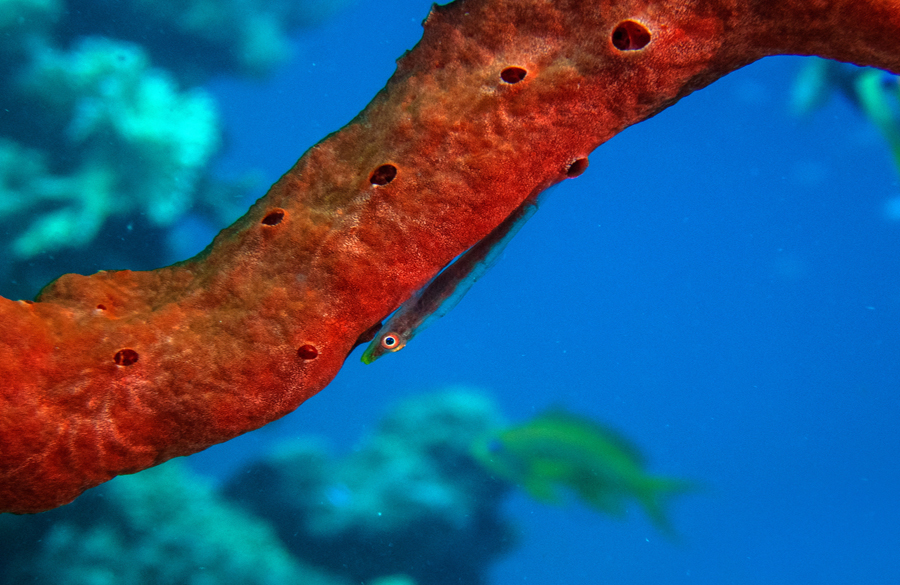FINGER WEAKNESS
The German, non-scientific, name of the finger sponges is probably due to the fact that this type of sponge, like a handful of fingers, is clearly visible in tropical waters. This is in contrast to many other sponge species, which prefer to grow between or under corals and rocks and are therefore much less noticeable. In addition, the red color of the finger sponges is so striking that they are hard to miss.
Two species are native to the northern part of the Red Sea. Firstly, the poisonous finger sponge lat. Negombata magnifica.

This is aptly named. It produces the extremely toxic substance latrunculin. This toxin is so valuable for basic research into substances that the poisonous finger sponge is also cultivated.
In its natural habitat, the poisonous finger sponge protects itself from predators by releasing a cloud of the strong-smelling substance when touched so that it is not eaten by fish.

What makes the poisonous finger sponge visually attractive for us divers is not only its shape and color, but also the fact that the colorful Chromodoris magnifica can often be found on the sponge, either individually or in groups. Known by the popular name pyjama night gill snail.

On the other hand, the iodine finger sponge lat. lotrochota purpuera. The iodine finger sponge is much larger when fully grown and can grow up to 70 cm in size. Its habitat is mainly in shallow water at a depth of 5 to 20 meters. Conspicuous and hard to miss as a diver its finger-like branches are somewhat firmer in consistency. Under pressure, it secretes a substance that has an intense iodine odor when exposed to air.

It is worth taking a closer look. If you have a good eye, you can spot the dwarf goby lat. Pleurosicya michilie, which is only 2 to 3 cm long.
Photos: Johann Vifian
Sources: Coral Reef Guide and Red Sea Reef Guide
